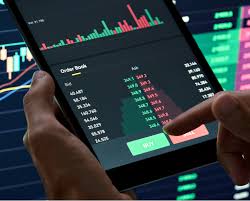
Emerging Trends in Crypto Trading: Shaping the Future of Investments
The landscape of cryptocurrency is an ever-evolving entity that keeps investors, traders, and analysts on their toes. Crypto Trading Trends visit website As digital currencies gain traction in mainstream finance, the importance of understanding crypto trading trends becomes paramount. In this article, we will delve into notable trends reshaping the crypto trading environment, explore their implications, and offer insights into future developments on the horizon.
1. Institutional Adoption of Cryptocurrency
A significant trend influencing the crypto trading scene is the increasing interest and involvement of institutional investors. Firms such as Tesla, MicroStrategy, and Square have publicly embraced Bitcoin, leading to a surge in legitimacy and confidence in digital assets. Institutions not only bring substantial capital into the market but also encourage other investors to dive into cryptocurrency.
This trend reflects a broader recognition of cryptocurrencies as a viable asset class. With institutional players getting involved, the market has observed increased volatility but also improved liquidity. The long-term implications include greater market depth, reduced price manipulation, and enhanced regulatory scrutiny.
2. The Rise of Decentralized Finance (DeFi)
Decentralized Finance, or DeFi, has revolutionized how individuals interact with financial services. By leveraging blockchain technology, DeFi platforms provide services such as lending, borrowing, and yield farming without intermediaries. The growing trend of users seeking autonomy over their finances drives the popularity of DeFi protocols.
Furthermore, DeFi has introduced innovative financial instruments and services, pushing trading strategies to adapt. Traders are now tapping into liquidity pools, borrowing assets to leverage positions, and engaging in yield farming strategies, fundamentally altering traditional trading approaches.
3. Integration of Artificial Intelligence and Machine Learning
The integration of artificial intelligence (AI) and machine learning (ML) in crypto trading strategies is gaining momentum. Traders are increasingly relying on sophisticated algorithms and predictive models to analyze market patterns and make data-driven decisions. AI-driven tools can assess vast amounts of data in real-time, allowing for quicker and more accurate trading strategies.
This trend enhances risk management and improves trading efficiency. With the market’s rapid fluctuations, the ability of AI to learn from historical data and predict potential outcomes is a valuable asset for traders looking to gain an edge.
4. Regulatory Developments and Their Impact
Regulatory scrutiny around cryptocurrencies is intensifying across the globe. Authorities are establishing frameworks to govern the crypto landscape, which introduces both challenges and opportunities for traders. Regulatory clarity can bolster confidence, attracting more participants to the market.

However, increased regulations may also lead to uncertainty and fear of compliance complications among traders. The evolving legislative environment necessitates that traders stay informed about their jurisdiction’s regulations affecting cryptocurrency transactions and investments.
5. Rise of Non-Fungible Tokens (NFTs)
Non-Fungible Tokens (NFTs) have taken the crypto world by storm, enabling the ownership and trading of unique digital assets such as art, music, and virtual land. The popularity of NFTs extends beyond collectors; traders are increasingly engaging in buying and selling NFTs for profit.
Consequently, NFT marketplaces have witnessed rapid growth, creating new avenues for traders to explore. This trend signifies a broader shift toward valuing digital ownership and uniqueness, which could influence how traders approach speculative investments moving forward.
6. The Emergence of Layer 2 Solutions
As scalability issues persist in major cryptocurrencies like Ethereum, Layer 2 solutions have emerged to enhance transaction speeds and lower costs. Solutions such as the Lightning Network for Bitcoin and various Ethereum scaling solutions are gaining traction.
These enhancements not only provide better user experiences but also contribute to the feasibility of complex trading strategies that rely on quick execution and low transaction fees. As Layer 2 solutions become more prevalent, traders can expect a more efficient trading ecosystem.
7. Increased Focus on Environmental Sustainability
With growing concerns about the environmental impact of cryptocurrency mining, there is a notable shift towards eco-friendly practices. Projects focusing on proof of stake (PoS) and other sustainable consensus mechanisms are gaining popularity.
This trend could influence trader sentiment, as environmentally conscious investors may lean toward projects that align with their values. Consequently, projects prioritizing sustainability could see increased demand, prompting traders to adjust their portfolios accordingly.
Conclusion: Embracing Change in Crypto Trading
In conclusion, crypto trading trends are rapidly evolving, driven by institutional adoption, technological advancements, and changing regulatory landscapes. Traders must stay informed to navigate this dynamic environment effectively. Adapting to these changes can unlock new opportunities and maximize potential gains while minimizing risks.
Understanding and embracing the currents of crypto trading trends is key to thriving in this fast-paced market. As cryptocurrencies continue to redefine the finance landscape, the strategies employed by traders must evolve, ensuring they remain relevant in this ever-changing arena.
Add Comment
Only active ALBATROSS Racing Club members can post comments